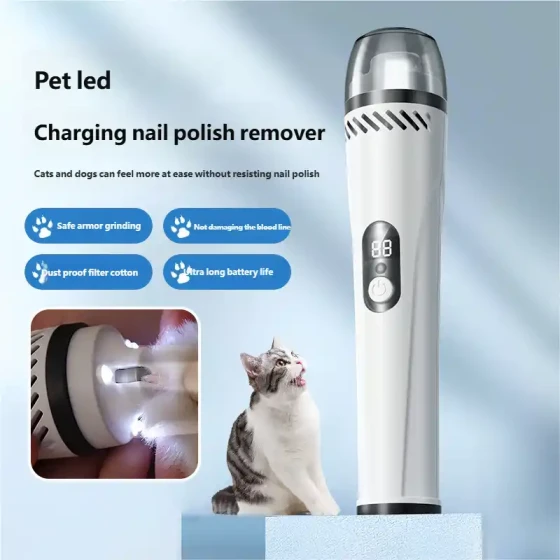Cat Skin Diseases_Common Skin Problems in Cats
Cat skin problems are often their "surface" troubles but frequently hint at underlying internal mechanism abnormalities. From annoying itching to distressing hair loss, almost every cat owner encounters them to some extent. Simply put, common cat skin diseases mainly revolve around parasites, fungi, allergies. Identifying early signs and timely seeking professional veterinary help are key to preventing minor issues from becoming major troubles.
Speaking of which, a cat's skin is as important as a human's "facade" - not only the body's first defense line but also a barometer of their health. Unfortunately, these little creatures can't talk; they can only express discomfort through scratching, biting, or licking. These behaviors may worsen skin damage, creating a vicious cycle. So, as their "personal assistant," we must develop sharp eyes to detect early signs.
Cat skin diseases are varied, but clinically, a few are definite "regulars."

1. Parasites: Silent Invaders
Parasites are the most common and easily overlooked category of cat skin diseases. They may be visible to the naked eye or microscopic, but their presence is very noticeable.
- Fleas (Fleas):
- Cause: Ctenocephalides felis, a small, agile blood-sucking external parasite. Don't think indoor cats are safe; we can bring flea eggs or adults home after going outside.
- Symptoms: Intense itching is typical; cats will furiously scratch and bite, especially near the base of the tail, abdomen, and inner hind legs. Sometimes adult fleas (tiny fast-moving black dots like sesame seeds) or "flea dirt" (black dots that turn reddish on a wet tissue) can be found in the fur. Some cats are allergic to flea saliva, and even a few fleas can cause severe generalized dermatitis (Flea Allergy Dermatitis, FAD), presenting with millet-sized crusts and papules, hair loss, and thickened, darkened skin.
- Diagnosis: Finding fleas or flea dirt is direct evidence. Veterinarians may use a flea comb or skin examination.
- Treatment and Prevention: Using flea-control medications is essential; many are available, including spot-ons, oral drugs, and collars. Choose appropriate products under veterinary guidance. Environmental cleaning is crucial since most of the flea lifecycle (eggs, larvae, pupae) occurs in the environment. Thoroughly clean cat areas, use pet-safe environmental insecticides or high-temperature steam cleaning. Regular deworming is the foundation of prevention.
- Mites (Mites):
- Cause: Several kinds, such as Demodex cati, Sarcoptes scabiei (rare in cats but possible), Otodectes cynotis (ear mites). Different mites inhabit various skin sites or hair follicles.
- Symptoms: Depend on mite type. Ear mites cause ear problems; cats frequently scratch ears and shake heads, with dark brown debris in the ear canal resembling coffee grounds. Demodex can cause localized or generalized hair loss, redness, and scaling with usually mild itching. Sarcoptic mites cause intense itching, often on ear edges, elbows, and hocks.
- Diagnosis: Requires skin scraping and microscopic examination. Ear mites are diagnosed by examining ear debris.
- Treatment: Use specific miticides based on mite type; treatment may be prolonged. Multiple pets require simultaneous examination and treatment.
2. Fungal Infections: Ringworm as Top Player
Fungal infections, especially ringworm, are probably the most common skin diseases novice cat owners encounter.
- Ringworm (Ringworm):
- Cause: Most commonly Microsporum canis, a zoonotic fungus. Kittens, elderly cats, and immunocompromised cats are more susceptible.
- Symptoms: Typical ringworm lesions are round bald patches covered with gray-white scales or crusts, with red, raised edges. Common on head, ears, limbs, and tail. Sometimes lesions are atypical with just sparse hair or small crusts. Itching varies; some cats are very itchy, others less so.
- Diagnosis: Wood's lamp examination fluoresces some strains in the dark (though not all), so it's not definitive. The most accurate methods are fungal culture or PCR testing.
- Treatment: Includes topical antifungals (ointments, sprays, medicated baths) and oral antifungals. Widespread or multiple lesions usually require systemic treatment. Therapy can last weeks to months. Environmental disinfection is vital, as spores survive long; dilute bleach or other pet-safe disinfectants should be used to clean areas and items cats contacted. Remember, this is contagious to humans!
3. Allergies: Overreactions of the Body
Cats, like humans, can be allergic to certain things, causing the immune system to overreact and lead to skin inflammation and itching.
- Flea Allergy Dermatitis (FAD): Previously mentioned; allergy to flea saliva, even few fleas can cause severe reactions.
- Food Allergy (Food Allergy):
- Cause: Usually allergic to certain dietary protein sources (chicken, beef, fish, dairy) or additives.
- Symptoms: Skin itching is primary, not limited to specific sites. Cats may excessively lick and scratch, causing hair loss, redness, crusting, and thickening. Sometimes accompanied by gastrointestinal symptoms like vomiting or diarrhea (not necessarily).
- Diagnosis: Food allergy diagnosis heavily depends on an "elimination diet trial." Under veterinary guidance, feed a special hydrolyzed protein or novel single protein diet (unfed before by the cat) for at least 6-8 weeks, avoiding all other foods or treats. Significant improvement followed by symptom relapse after reintroducing the original food indicates food allergy. This process requires patience and strict compliance.
- Treatment: Once diagnosed, lifelong feeding of food excluding the allergen or specially processed food is needed.
- Atopic Dermatitis (Atopic Dermatitis):
- Cause: Allergy to normally harmless environmental substances like pollen, dust mites, mold spores, fabric fibers. Similar to human hay fever or allergic rhinitis, but mainly manifests as skin problems in cats.
- Symptoms: Seasonal or non-seasonal itching, common on face, ears, groin, armpits, limbs. Cats excessively lick and scratch, with inflammation, hair loss, and pigmentation changes.
- Diagnosis: Diagnosis is one of exclusion after ruling out other causes (parasites, fungi, food allergy). Allergy skin or serum tests may be performed, but results require clinical correlation.
- Treatment: Management is complex and may combine methods: avoid allergens (if possible), antihistamines, corticosteroids, immunosuppressants, allergen-specific immunotherapy (desensitization), and treatment of secondary infections (bacterial or yeast).
4. Bacterial or Yeast Infections: Often Secondary
Bacteria or yeasts (such as Malassezia) usually aren't primary culprits but take advantage of damaged skin barriers, lowered immunity, or chronic moisture, causing secondary infections.
- Cause: Staphylococcus spp. (staphylococci) are most common bacteria; Malassezia pachydermatis is a common yeast.
- Symptoms: Skin redness, pain, papules, pustules, scaling, crusting, possibly odor. Itching is often severe.
- Diagnosis: Cytology (microscopic examination of skin surface samples) or bacterial/fungal culture with sensitivity testing.
- Treatment: Use of antibiotics (oral or topical) or antifungals (oral or topical), often combined with medicated baths. Treating underlying diseases (allergy, parasites) is key to preventing recurrence.
How to Be a Qualified "Skin Detective"?
- Careful Observation: Regularly perform a full-body check of your cat, noting any abnormal red spots, papules, scales, crusts, or bald areas. Observe behavior for more frequent scratching, licking, or biting a certain spot.
- Grooming: Frequently groom your cat to remove dead hair and more easily detect abnormalities like flea dirt, dandruff, or parasites in the fur.
- Maintain Cleanliness: Regularly clean your cat's living environment, especially food and water bowls, litter boxes, bedding, and toys.
- Regular Deworming: Administer internal and external parasite control products at the intervals and products recommended by your veterinarian. This is the most effective prevention of many parasite-related skin diseases.
- Healthy Diet: Provide high-quality, balanced cat food to help maintain overall health and immunity.
- Seek Veterinary Care Promptly: If you notice abnormal skin or persistent itching, do not self-medicate! Take your cat to a professional veterinarian promptly. Diagnosis often requires specialized equipment and lab tests; misdiagnosis or mistreatment can worsen the problem. Veterinarians will conduct detailed exams, determine causes, and develop individualized treatment plans.
A cat's skin health is an important component of their quality of life. More observation and care enable earlier problem detection, sparing your furry friend unnecessary suffering. Cat parenting is not easy—cherish this "surface" and "internal" connection along the way.



